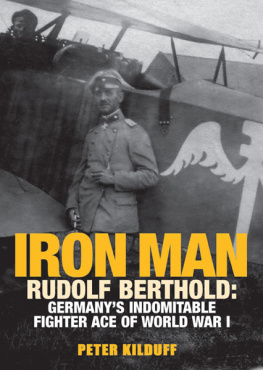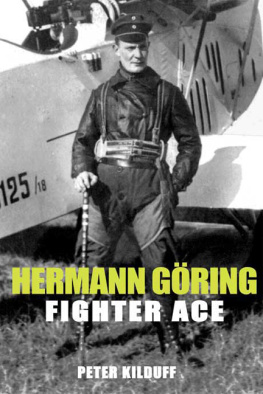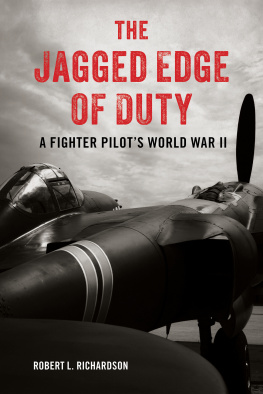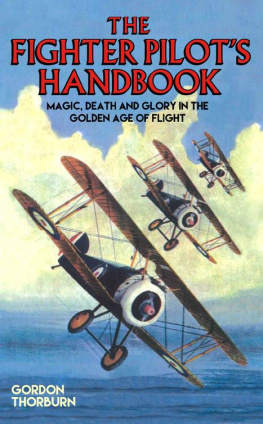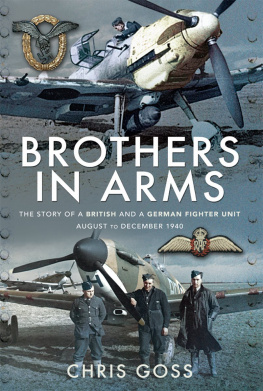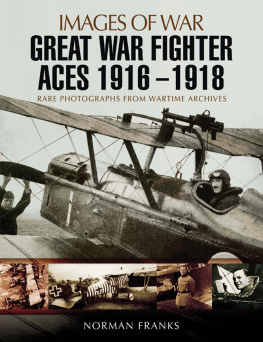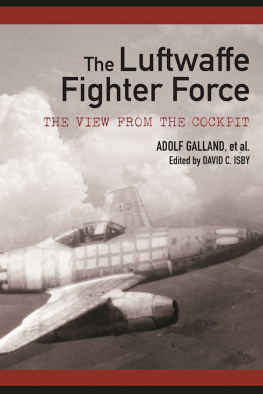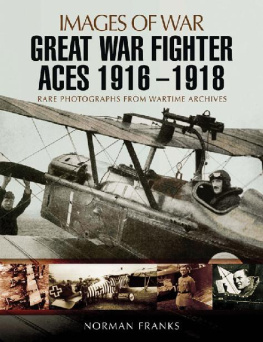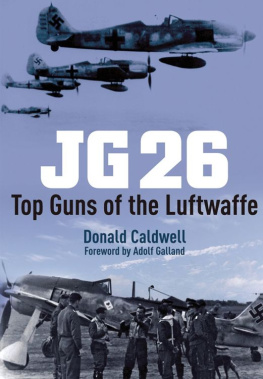This book is dedicated to my friends Christa and Franz Rothenbiller, who have helped me to learn more about the intricacies of German language and culture. Their informal, patient lessons during nearly thirty years of sister-city exchanges have greatly benefitted my research.
Other books by Peter Kilduff
The Red Baron
Thats My Bloody Plane
Germanys Last Knight of the Air
U.S. Carriers at War
A-4 Skyhawk
Germanys First Air Force 1914-1918
Richthofen Beyond the Legend of the Red Baron
Over the Battlefronts
The Red Baron Combat Wing
The Illustrated Red Baron
Talking With the Red Baron
Red Baron The Life and Death of an Ace
Black Fokker Leader
Hermann Gring Fighter Ace

Published by
Grub Street
4 Rainham Close
London
SW11 6SS
Copyright Grub Street 2012
Copyright text Peter Kilduff 2012
British Library Cataloguing in Publication Data
Kilduff, Peter.
Iron man: Rudolf Berthold: Germany's indomitable
fighter ace of World War I.
1. Berthold, Rudolf. 2. Fighter pilotsGermany
Biography. 3. World War, 1914-1918Aerial operations,
German.
I. Title
940.4'4'943'092-dc23
ISBN-13: 9781908117373
EPUB ISBN: 9781909808805
All rights reserved. No part of this publication may be reproduced,
stored in a retrieval system, or transmitted in any form or by any
means electronic, mechanical, photocopying, recording or otherwise,
without the prior permission of the copyright owner.
Cover design by Sarah Driver
Book design and artwork by:
Roy Platten, Eclipse
Printed and bound by MPG Ltd, Bodmin, Cornwall
Grub Street Publishing only uses
FSC (Forest Stewardship Council) paper for its books
FOREWORD
I first became aware of the fighter ace Rudolf Berthold through one of his former flying comrades, the late Oberst der Reserve a.D. [Colonel, Reserves, Retired] Paul Strhle, some forty-five years ago. At that time, a few hundred World War I aviation veterans were alive in Germany and one of them, the late Oberstleutnant der Reserve a.D. Hanns-Gerd Rabe, put me in touch with Strhle, the first German fighter pilot I came to know. Strhle and I had a lively correspondence while I was gathering material to write an article for the old Cross & Cockade Journal. Consequently, he invited my wife Judy and me to his home in Schorndorf, Germany in May 1967, just before his seventy-fourth birthday.
I was impressed that Paul Strhle had endured numerous aerial combats and shot down fifteen of his opponents over a seventeen-month period. At one point he interjected:
You should have met my old boss. He flew during most of the war, won the highest medals, brought down forty-four British and French aeroplanes, was shot down several times himself and went on to fly with a paralysed arm. Er war der Eiserne der deutschen Jagdflieger! [He was the Iron Man of German fighter pilots!]
I listened carefully as he described serving under Berthold, who then commanded Jagdstaffel 18 and was preparing Strhle to move up and lead a unit of his own. He told me about Bertholds various wounds and touched briefly on the dark side of medical treatment that drew der Eiserne into drug abuse. We finished the evening on a cheerful note with a nice glass of Swabian wine, but I was left with many unanswered questions about Rudolf Berthold.
Sadly, little historical material about Berthold survived the World War II bombing of the Reichsarchiv in Potsdam and it was difficult to learn more about his life, struggles and achievements. However, the final years of the Cold War in the late 1980s gave me access to Berthold-related resources in a former East German archive, while I was researching other World War I flyers. That material and the subsequent discovery of Bertholds personal war diary in the Bundesarchiv freed me from relying on the few books that had long represented his story and not always accurately or completely. Now, with better facts at hand, I am glad to offer a new look at Rudolf Bertholds life and am grateful to John Davies at Grub Street for providing the opportunity to do so.
Rudolf Berthold triumphed in at least forty-four aerial combats. Archival material and map study now make it possible to examine those and related combats and to suggest which air units and even individual airmen most likely fought against each other. Such encounters are a significant component of researching World War I aviation history, in which an aerial victory, luftsieg or victoire arienne decided the fate of so many combatants. In recent years, this form of research has become more conclusive with the help of books such as The French Air Service War Chronology 1914-1918, The Jasta Pilots, The Sky Their Battlefield, and other valued standard reference texts published by Grub Street, which are included in this books bibliography. I am indebted to the authors of those books for their labours in compiling such works.
Photographs have been important to my research and I am grateful to friends and colleagues who have generously shared images for this book: Rainer Absmeier, Dr. Lance J. Bronnenkant, Helge K.-Werner Dittmann, Trevor Henshaw, Dr. Volker Koos, the late Heinz J. Nowarra, Colin Owers, Alex Revell, Greg VanWyngarden and Tobias Weber.
While researching and writing this book, I received help from many people and note with gratitude the kind efforts, encouragement and information provided by the following people and their institutions: Brigitte Bnsch, Alexandra Nothdurft and Renate Wnschmann, Stadt Erlangen; Karin Binder, Stadtgeschichte Wittenberg; Thomas Binder, Stadtarchiv Kamenz; Dieter Dureck, Landesamt fr Gesundheit und Soziales, Berlin; Wesley Henry and Brett Stolle, National Museum of the U.S. Air Force; Achim Koch and Michael Weins, Bundesarchiv Militrarchiv; Dr. Eberhardt Kettlitz, praeHistoria Bro fr Archologie und Geschichte; Stephan Khmayer, Deutsche Dienststelle (WASt); Oberstleutnant Harald Potempa, Militrgeschichtliches Forschungsamt; Dr. Wolfgang Mhrle, Judith Bolsinger and Manfred Hennhfer of the Landesarchiv Baden-Wrttemberg; Dr. Uwe Mller, Stadtarchiv Schweinfurt; Schulleiter Heinz Pfuhlmann, Franz-Ludwig-Gymnasium Bamberg; Annemarie Renz-Sagstetter, Stadt Bamberg; Pfarrer Wolfgang Scheidel, Evangelische Gemeinde Ditterswind; Claudia Veit, Stadtarchiv Passau; Dr. Clemens Wachter, Universittsarchivar, Friedrich-Alexander-Universitt Erlangen-Nrnberg; and Dr. Robert Zink, Stadtarchiv Bamberg. Last but not least, Kimberly Farrington and Ewa Wolynska of the Elihu Burritt Library of Central Connecticut State University exemplify the valued help I have received from my alma mater.
Other valued friends and colleagues who have helped in many ways include: Rainer Absmeier, Trudy Baumann, Dr. Lance J. Bronnenkant and his exhaustive research into German wartime images, Christophe Cony, Russell Folsom, Norman Franks, Russ Gannon, Trevor Henshaw, Reinhard Kastner, Andrew Kemp, Paul S. Leaman, James F. Miller, Nicolas Philippe, Thorsten Pietsch, Julian J. Putkowski, Alex Revell, Oberleutnant Sebastian Rosenboom, Claudia Schnemann, Gunnar Sderbaum, Dr. James Streckfuss, Dr. Hannes Tger, Lothair Vanoverbeke, and Aaron Weaver.
My sincere thanks also go to this cadre of friends: Ronny Bar for his excellent colour artwork portraying aircraft flown by Rudolf Berthold, Judy and Karl Kilduff and my longtime friend and mentor David E. Smith for their helpful review of and comments on the manuscript, my cultural mentor Klaus Littwin for helping me understand German linguistic nuances and providing valuable assistance in locating important research sources, Dr. M. Geoffrey Miller for providing his medical expertise, long-time friends Oberbrgermeister i.R. Prof.Dr.(h c) Franz J. Rothenbiller and his wife Christa for their valued help in deciphering significant documentary material, the late Oberst der Reserve a.D. Paul Strhle for relating his experiences of service under Rudolf Bertholds command, and Stewart K. Taylor for sharing his encyclopaedic knowledge of British Commonwealth flight operations in World War I.
Next page
